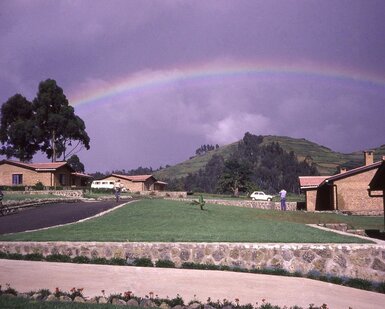Please type a search term (at least two characters)
News
Free online course on uncertainty analysis for Earth Observation now available

EMPIR training course to support metrology for satellite Earth observation is now available
The Project
EMPIR project ‘14SIP02 Uncertainty Analysis for Earth Observation e-Learning Training Course’ (14SIP02, EO e-learning) developed a globally-accessible e-learning course on uncertainty analysis for the radiometric and spectral calibration of Earth observation (EO) instruments, and it is now freely available.
The earlier EMRP project ‘Metrology for earth observation and climate’ (ENV53, MetEOC2) created a classroom course on the same topic, and this material has been used to develop the new e-learning course.
Long-term observational records from satellites of so-called essential climate variables are essential if we are to address the growing problem of climate change. But to see climate trends in data that is sensitive to natural variability (e.g. weather, volcanic effects, etc), we need satellite observations that are stable over decades and where data from different sensors can be seamlessly combined. The Quality Assurance Framework for Earth Observation (QA4EO), endorsed by the space agencies, shows that metrological principles of traceability to the International System of Units (SI), intercomparisons and uncertainty analysis are essential for achieving stability and interoperability.
This course provides guidance for EO specialists in how to apply metrological principles in EO. Its focus is on instrument calibration, but many of the key principles apply to broader applications too. It was developed with the support of the European Space Agency (ESA), which believes such training is essential to increase awareness and understanding of the value of metrology to EO, and to provide a practical set of tools on that application.
The course
This e-learning course introduces a structured approach to uncertainty analysis when applied to the radiometric and spectral calibration of instruments with Earth observation applications. The course focuses on how to apply uncertainty analysis, taking users step-by-step through the concepts before introducing real laboratory and field examples.
The course takes approximately four hours to complete and consists of three modules.
It is suitable for both a general scientific audience and experienced professionals working in the field of earth observation, industrial professionals performing calibration of earth observation sensors, as well as those interested in understanding uncertainty analysis in relation to the instruments used in earth observation applications.
Emma Woolliams from NPL said ‘I am glad that we were able to make this course freely available to the EO community. Uncertainty analysis needs to be taught in context and through relevant examples and I am thrilled with the responses so far. I am also working on a more advanced course on uncertainty analysis for EO satellite data, through a new EMPIR project which will build on this one'.
Uncertainty Analysis for Earth Observation course
This EMPIR project is co-funded by the European Union's Horizon 2020 research and innovation programme and the EMPIR Participating States.
This EMRP joint research project is part of EURAMET’s European Metrology Research Programme. The EMRP is jointly funded by the EMRP participating countries within EURAMET and the European Union.
Want to hear more about EURAMET?
Carbon dioxide, released from man-made activities, is lowering the pH of the Earth’s oceans, and impacting the health of marine organisms worldwide more
Supporting automated and reconfigurable manufacturing systems more
Working with external project Cool White to test and suggest improvements on the locally available white paints more
The project FutureEnergy has provided new calibration services for ultra-high voltages and a good practice guide on Lightning Impulse dividers more
For many of the 5000 photonics companies in Europe a precise knowledge of a material’s optical properties is vital for industrial competitiveness more





